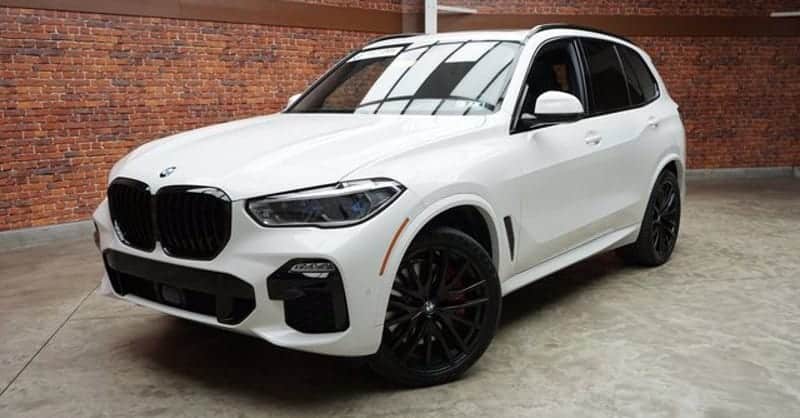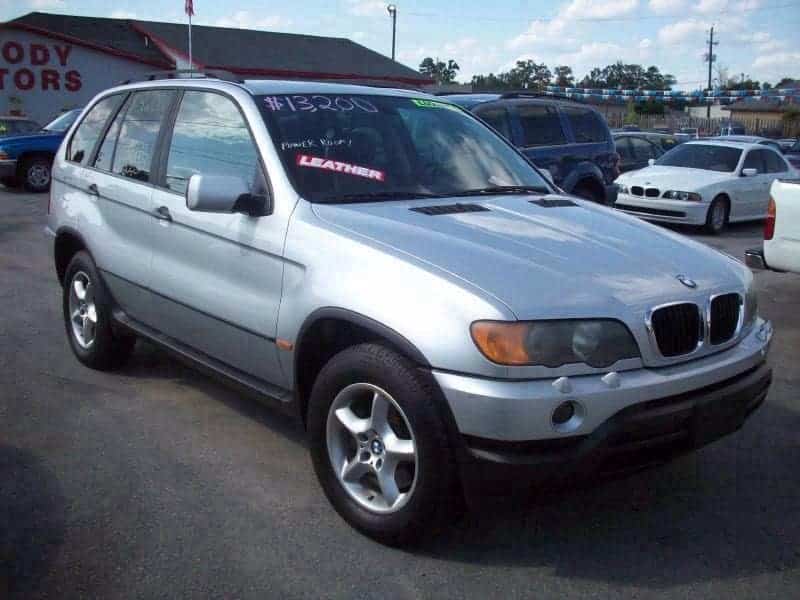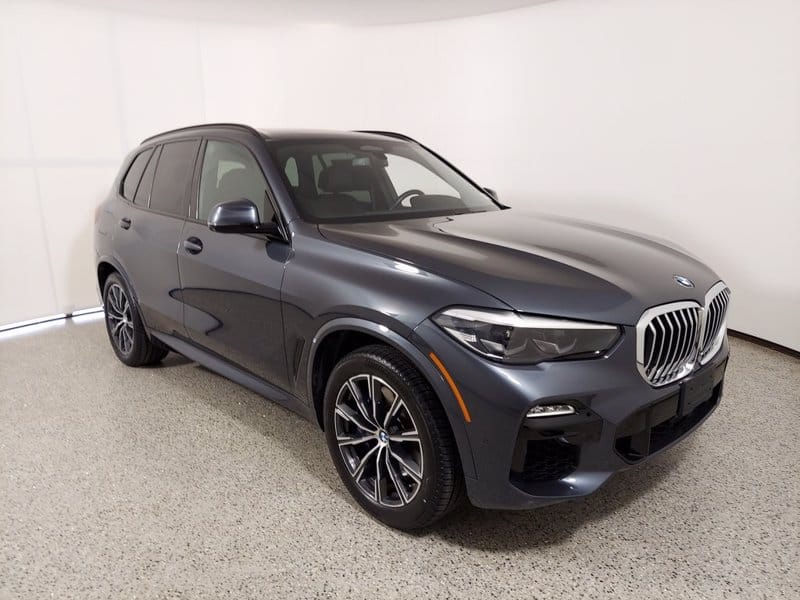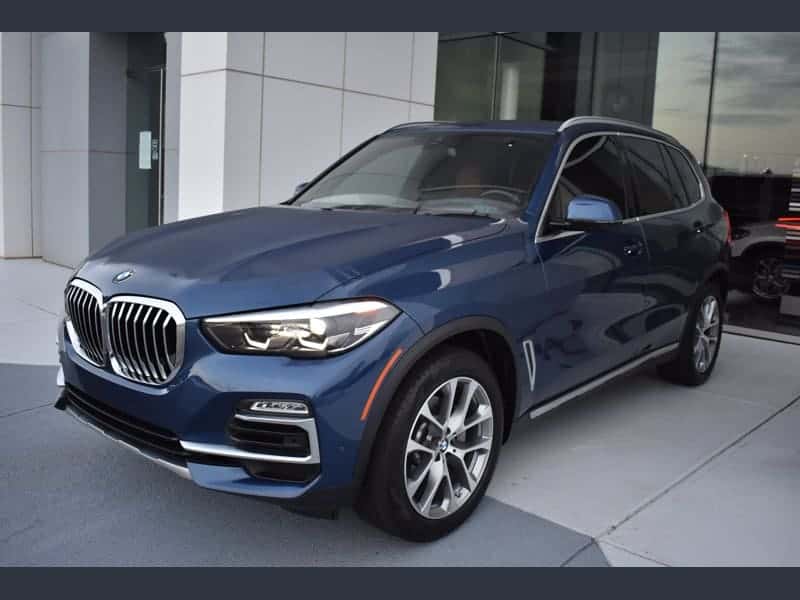What to Look for When Buying a Used BMW X5

The BMW X5 was one of the first bunch of luxury SUVs that made it really big across the world. The midsize luxury crossover SUV market really burst into life in 2005 with the launch of the Range Rover Sport and the Audi Q7, but most people don’t realize that the BMW X5 had already been around for more than five years by that point. Because the X5 has been in production and selling consistently well for more than two decades now, there are always plenty of used examples for sale out there. So, let’s take a look at what to look out for when buying a used BMW X5.
How long has the BMW X5 been in production?
The first BMW X5 model appeared in 1998 and it went on sale in America and around the world as a 1999 model year. When it first went on sale it could be bought in both manual and automatic versions and it was the first SUV BMW ever offered for sale. In true BMW style, the standard drivetrain was rear-wheel-drive although all-wheel-drive was also available from the start.
Why is the BMW X5 so popular?
To begin with, the BMW X5 proved popular because there wasn’t a lot of competition and because it was a BMW. Don’t forget that this was the first SUV that BMW ever produced and the only real rivals in its home European market at the time were the Mercedes M-Class and the Land Rover Range Rover. Here in America, the Cadillac Escalade appeared at roughly the same time as the BMW X5 but the Escalade was a much bigger vehicle and didn’t perhaps have the same allure as the more exotic European BMW.
Even though buyers in the midsize luxury SUV market are traditionally quite promiscuous in terms of their car-buying habits, the X5 has remained consistently popular. The X5 is a rock-solid platform that’s proved considerably more reliable and dependable than many of its rivals, so it’s a pretty solid buy even if it isn’t exactly the most exciting vehicle in its segment.
How popular is the BMW X5?
In its first full year on sale in the US (2000) BMW sold 26,720 units of the X5, which was more than three times the number sold in its native Europe. Sales jumped further to 40,622 in 2001 and remained fairly consistent between 35k and 40k until they hit a new high point for the marque in 2012 of 44,445 units sold in the US. Since 2014, BMW X5 sales in the US have averaged just over 50k per year.
BMW X5 sales in the US are around double those of the Range Rover Sport but very similar to the Mercedes GLE Class.
If you want to know what the best price is you can get a brand new BMW X5 or any other vehicle for in your area of the country, check out the free quote tool below:
How many generations of the BMW X5 are there?
There have been four generations of the BMW X5 so far but BMW doesn’t call them anything as straightforward as the first, second, third, and fourth generations. Instead, the first generation in BMW-speak is the E53, the second generation is the E70, the third generation is the F15 and the fourth generation is the G05. No? Me either!
First-generation BMW X5 (E53 1999-2006)

You may or may not know that the E53 first-generation BMW X5 was developed and produced shortly after BMW bought Land Rover, and you will find a lot of synergy between the early X5 and Range Rover L322 of that time.
The X5 was equipped with a range of inline-six, V-8 and diesel engines that were shared with the Range Rover, although I have to say that my extensive experience of those models at that period allows me to testify that the X5 was an awful lot more reliable than its British counterparts with the same engines.
A facelifted version of this generation of the X5 went into production in 2003 for the 2004 model year but good luck telling the difference unless you are a bit of an X5 aficionado. Although the X5 has never been the most daring of designs, these earliest versions of the BMW still look decent today if you like the style of the X5 and you get a reasonable one for not a lot of money these days.
Second generation BMW X5 (E70 2006-2013)

If you want a used BMW X5 with more than five seats then the second generation E70 model is where your search needs to begin as this was the first one to be offered with an available third-row to increase the maximum seating capacity to seven. This model also introduced quite a few advanced technologies for the first time such as the iDrive system as part of the X5’s standard equipment.
From the 2008 model onwards you have to get to know a new nomenclature scheme that continues to this day, which saw models like the X5 3.0si renamed the X5 xDrive30i and the 4.8i renamed the xDrive48i.
This second generation also saw the introduction for the first time of the X5 M high-performance version which started landing in dealerships in September 2009 as a 2010 model year. It featured the first M Power V-8 turbo engine that produced an immense 555 horsepower and 500 lb.-ft. of torque and M Dynamic Performance Control to harness that power and deliver impressive handling for an SUV.
An inevitable facelift for the E70 didn’t arrive until the 2011 model year, and if you are learning to speak fluently in BMW, you’ll be delighted to know that this was referred to for some reason as the LCI update for the X5.
Third generation BMW X5 (F15 2013-2018)

Features of note for the third generation include four-cylinder engines for the first time and a PHEV (Plug-In Hybrid Electric Vehicle) version in later model years of this generation. This generation of the X5 sold particularly well although the styling was definitely evolutionary rather than revolutionary and the average person in the street will struggle to tell one from the previous generation.
Fourth-generation BMW X5 (G05 2018-Present)

The fourth-generation X5 went on sale in late 2018 as a 2019 model and is built on a new Cluster Architecture (CLAR) platform that it shares with several other BMW models. This one is perhaps the sportiest-looking X5 to date, although the overall silhouette is pretty much unchanged.
It was originally an all-wheel-drive-only model but rear-drive sDrive versions were added to the US lineup for the 2020 model year. Inline-six and PHEV powertrains are what you get to choose between with this generation, although there’s also the X5 M for those who are perhaps less environmentally aware.
How well does the BMW X5 hold its value?
The BMW X5 doesn’t hold its value from new anywhere near as well as you might expect for such a popular model. In the first three years of ownership, you should expect the X5 to lose more than 37% of its value, and the caredge.com website rates it only 60th out of 71 luxury models for depreciation over five years with its depreciation expected to be more than 55%.
Are BMW X5s reliable?
According to RepairPal, the BMW X5 has a reliability rating of 2.0 out of 5 and ranks 13th out of 19 luxury full-size SUVs. The average annual repair cost is $1,166 which means it ranks poorly for ownership costs. Compared to many rivals, the X5 is also more likely to require major repairs.
There isn’t much to complain about with the reliability of the transmissions, suspension, brakes, and steering systems on the whole, but if you are going to have a serious problem with a used BMW X5 it’s likely to be with the engine.
Another area of concern is the onboard electronic system as an X5 gets older, but this isn’t unique to the X5 by any means. These are upscale luxury vehicles and they get equipped with a lot of the latest tech, and the amount of electronics and the fact some of it is introduced quite early in its development can sometimes lead to problems as vehicles age.
Watch out for engine problems if you are looking at buying any of the first three generations of the X5. Getting a professional to do an inspection is a good idea even if the engine seems okay during a test drive. There have been issues in the past with the X5 stalling for no apparent reason, so if this happens to you on a test drive, you’re probably best advised to walk away and check out another one instead.
Which BMW X5 model years should you avoid?
If the BMW X5 you’re interested in buying is a 2011 model year then this is one to be very careful of. This is the model where the stalling problem was most prevalent and it could result in a new engine at a cost of up to $7,000. In some cases, only the vehicle’s computer needed to be replaced, but even this is still an expensive fix.
There is good news even here, however, and that’s because if you are looking at a 2011 model year BMW X5 today there’s every chance any stalling issue will have been resolved by now. The problem usually occurred at around the 70,000-mile mark, although some didn’t see the problem surface until as much as 100,000 miles.
If you are looking at a 2011 X5 with 80k miles or more and it has a good service history you should be okay, but you might still want to get an expert to check it out just in case. And something you should always do before agreeing to buy any used car is to check its history with a service like EpicVIN.
What’s the BMW X5 like for fuel economy?
BMW X5 fuel economy has gotten an awful lot better over the years, and although you might be able to buy an early model for a relatively small amount of money these days you’ll certainly get stung with the running costs. The EPA fuel economy ratings for a 2000 model year BMW X5 were 13 mpg in the city, 16 mpg on the highway, and 14 mpg combined, and that was when it was brand new.
A 3.0-liter gas-powered 2010 model is a bit better at 15/21/18 mpg, and a 3.0-liter turbo diesel of that vintage could get you as much as 19 mpg in the city, 26 mpg on the highway, and 22 mpg combined.
By the time we get to something like a 2020 model year X5, a 3.0-liter gas version is rated at 21 mpg in the city, 26 mpg on the highway, and 23 mpg combined. But if you want the ultimate X5 for fuel economy a 2021 xDrive45e PHEV can offer a combined 50 MPGe.
How many seats are in a BMW X5?
There have been seven-seat versions of the X5 ever since the second generation but the majority of used models you’ll come across are likely to be five-seat variants. The X5 is at its best with just the two rows of seating as there isn’t a lot of room inside once you squeeze that third row in and those seats should only really be considered suitable for children.
Is the BMW X5 AWD?
The overwhelming majority of X5 models you’ll find for sale used in the US will be all-wheel-drive. There have been rear-drive versions since the early days but AWD has always been the preferred option for most when buying the X5 brand new.

How safe is the BMW X5?
There isn’t much to worry about when it comes to a used BMW X5 and its safety credentials. The IIHS has always rated the X5 highly, with the 2008 model a Top Safety Pick and the 2020 model a Top Safety Pick+. There have been some years when the NHTSA has only given the X5 four out of five stars for overall safety, but these seem like a bit of an aberration, especially with the IIHS awarding its coveted Top Safety Pick+ status to the BMW in the same model year!
Is the BMW X5 fast?
It’s fair to say that no version of the BMW is what you’d call sluggish, even for an SUV, and in some cases, the X5 can be blisteringly quick. Even something like a 2010 BMW X5 xDrive40d boasts a 0 to 60 mph time of just 6.0 seconds, but a 2010 X5 M can get you to 60 mph in just 4.5 seconds. So yes, you could confidently make the overarching statement that the BMW X5 is pretty fast.
Is the BMW X5 comfortable?
There’s something of a paradox when it comes to the X5 and comfort as it depends on what type of comfort you are referring to. I can tell you from personal experience that the seats of the BMW X5 can be amongst the most comfortable car seats you’ll ever sit in, but the ride of some models can be so firm that it doesn’t matter how comfy the seats are.
I was once on a Land Rover course where we were like-for-like testing the Range Rover Sport against the BMW X5 and the Mercedes M-Class. The front seats in the X5 looked like a dentist’s chair but with about a hundred times more adjustment, but I’ve never sat in a more comfortable passenger seat to this day.
However, they also used to say that if you drove over a coin in an X5 you could tell if it was heads or tails and I can testify that is only a slight exaggeration of how firm the ride used to be in the X5. Things are much better with later models, especially with some of the fancy suspension systems, but the ride in the X5 can still be on the firm side if you go for a sportier model and select the sportier suspension settings.
What’s the highest level of BMW X5?
You can easily recognize the highest trim level of any BMW X5 model year as it has the highest number and usually an M in there somewhere. The X5 M is generally the highest and most expensive version of the X5 but the M division models are now considered separate from the regular range.
At the moment, the M50i is probably what should be considered the top trim, aside from the X5 M. On the other hand, even the M50i is listed as a model in its own right on the BMW website as it separates the X5 into Core, Electrified, BMW M, and M Division versions.
How much should you pay for a used BMW X5?
You can get a cheap BMW X5 from around 2002 onwards from as little as $2,000, but from there you can pay anything up to $105,000 and anywhere in between. The good news is there’s a ton of them out there and if you go to check one out and something doesn’t feel right you can easily walk away and find another one down the road.
If you want the chance of an incredible used BMW X5 or another vehicle bargain, then check out a government auction subscription that will tell you when and where these exciting auctions are taking place so you can take advantage.
Is a used BMW X5 worth the money?
As long as you are as sure as you can be that the engine is sound and the one that you’re looking at doesn’t have a ton of electrical glitches, then a used BMW X5 is a pretty solid used buy. Personally, I think there are loads of vehicles out there for sale that are more desirable and certainly more attractive. #
Quite honestly, I’ve never understood the appeal of the X5 because I think it is just plain boring. Yes, it is well-made; yes, it does sell well; yes, it is pretty reliable; and yes, they do depreciate quite heavily from new and can look quite cheap when they have a few years on their backs.
My problem with them is I never much cared for the way they looked when they were first launched and they don’t look that much different today. Now, that can be a good thing because you could be driving a 15-year-old BMW X5 and you could pass it off as being much newer to most people if it was in good condition.
I will say that the Mercedes M-Class I tested that day with Land Rover all those years ago was worse because it wasn’t just boring to look at, it was also the most boring vehicle I’ve ever driven as well.

Even if you disagree with me and you like the way the X5 looks, always keep in mind that regardless of how cheap you buy one, an X5 is still a BMW and a luxury vehicle that cost a lot of money when it was brand new and it will still cost luxury money to maintain. You could get a very decent used X5 for $5,000 without too much trouble, but you could also very easily find yourself with a repair bill of that or more before too long too if you don’t drop on a good one. You have been warned.
